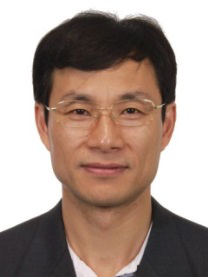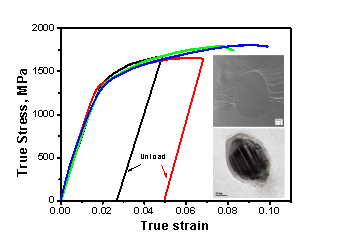High-entropy and Amorphous Alloys
High-entropy and Amorphous Alloys







Zhaoping Lvu Professor at the University of Science and Technology Beijing, Distinguished Young Scholar of China, Changjiang Distinguished Professor
Weihua Wang Researcher at the Institute of Physics, Chinese Academy of Sciences, Academician of the Chinese Academy of Sciences
Yong Zhang Professor at the University of Science and Technology Beijing
Yanhui Liu Researcher at the Institute of Physics, Chinese Academy of Sciences, Distinguished Young Scholar of China
Yuan Wu Researcher at the University of Science and Technology Beijing, Outstanding Young Scholar of China
【Chief members】
Zhaoping Lvu Professor at the University of Science and Technology Beijing
Weihua Wang Researcher at the Institute of Physics, Chinese Academy of Sciences
Yong Zhang Professor at the University of Science and Technology Beijing
Yanhui Liu Researcher at the Institute of Physics, Chinese Academy of Sciences
Yuan Wu Researcher at the University of Science and Technology Beijing
【Research Background】
High-entropy and amorphous alloys are new types of highly disordered alloys. Whereas the traditional development approach for these alloys is a time-consuming and laborious procedure and faces the challenge of insufficient data support, materials genome engineering can realize the parallel preparation of multiple samples through the continuous regulation of growth variables, thereby accelerating the discovery and research of high-entropy and amorphous alloy materials. The adoption of the materials genome approach can achieve fast synthesis, structural characterization, and performance measurements of considerable high-entropy and amorphous alloy samples experimentally, from which new materials with expected properties can be selected. In addition, systematic and comprehensive experimental big data can be acquired, from which the formation pattern and physical mechanism of high-entropy and amorphous alloys can be discovered, thereby facilitating the establishment of new material design methods.
【Research Objectives】
Based on the acquisition, accumulation, integration, and application of the calculation and experimental data on high-entropy and amorphous alloys, our team aims to develop experimental and calculation methods with a high throughput to reveal the inherent relationships among the microstructure, construction, and performance of highly disordered alloys and achieve a structural regulation of these materials, thereby breaking through the bottleneck of multi-scale data modelling. In addition, the team plans to establish high-throughput acquisition and machine learning technologies to acquire the microstructure, physical property, and phase formation pattern data of highly disordered alloys, based upon which a dedicated database system can be created to reduce the time and cost of developing new high-entropy and amorphous alloys.
【Main Research Areas】
1. Investigate the correlation between the structure and performance of high-entropy and amorphous alloys.
2. Develop high-throughput design and machine learning technologies for high-entropy and amorphous alloys.
【Significant Research Progress】
1. Proposal of a novel strength and ductility enhancement mechanism based on the discovery of a new form of interstitial in high-entropy alloy
By adopting an equiatomic TiZrHfNb high-entropy alloy as the model and adding an appropriate amount of oxygen to it, our team has discovered a new form of oxygen interstitials in alloys, the state of which is between frequently occurring random interstitials and a ceramic phase. This new form is called an “ordered interstitial complex,” which can significantly improve the strength and ductility of the alloy, thereby breaking the paradox of strength and ductility in metal materials. The results, published in Nature, provide new ideas for the recognition of interstitial and ordered strengthening and the design of metal materials with enhanced strength and ductility.
|
|
Fig. 1 Regulation and strength and ductility enhancement mechanisms of interstitial complexes.
2. Identification of the structural characteristics of bulk amorphous alloys and proposal of a new approach to enhance the strength and ductility of amorphous alloys
By investigating the key scientific issues in the research on bulk amorphous alloys, our team has revealed the atomic structural characteristics of such alloys, as well as a general formula for their atomic stacking. On this basis, we proposed a new approach for the strength and ductility enhancement of amorphous alloys and their structural regulation mechanism, and established a new theory of strength and ductility enhancement through ordered structures in disordered solids (Fig. 2). This study has realized the preparation of materials with controllable structures and properties and promoted a new research direction for amorphous structures and their strength and ductility enhancement. It has not only made important contributions to identifying the stacking structure of the atomic layers of amorphous alloys but has also provided a theoretical basis and new ideas for the development of high-performance amorphous alloy materials. These achievements bagged the second prize in the 2018 National Natural Science Award.


Fig. 2 Mechanical behavior in the transformation-induced plasticity of amorphous alloys and regulation mechanism of stacking fault energy.
